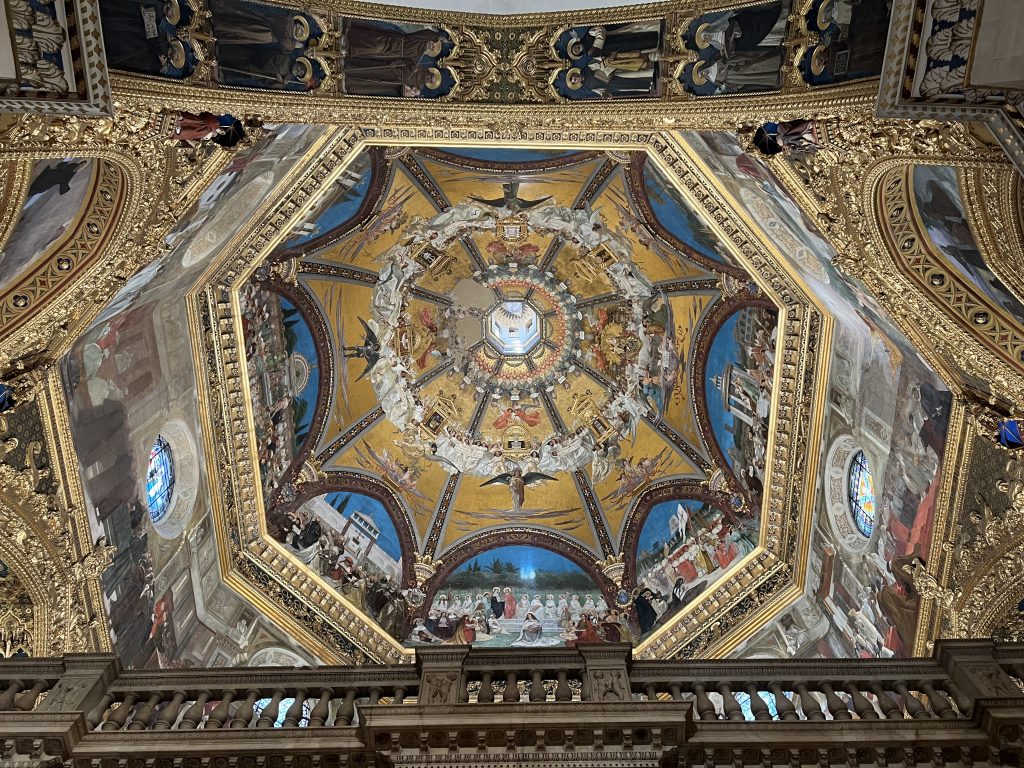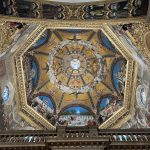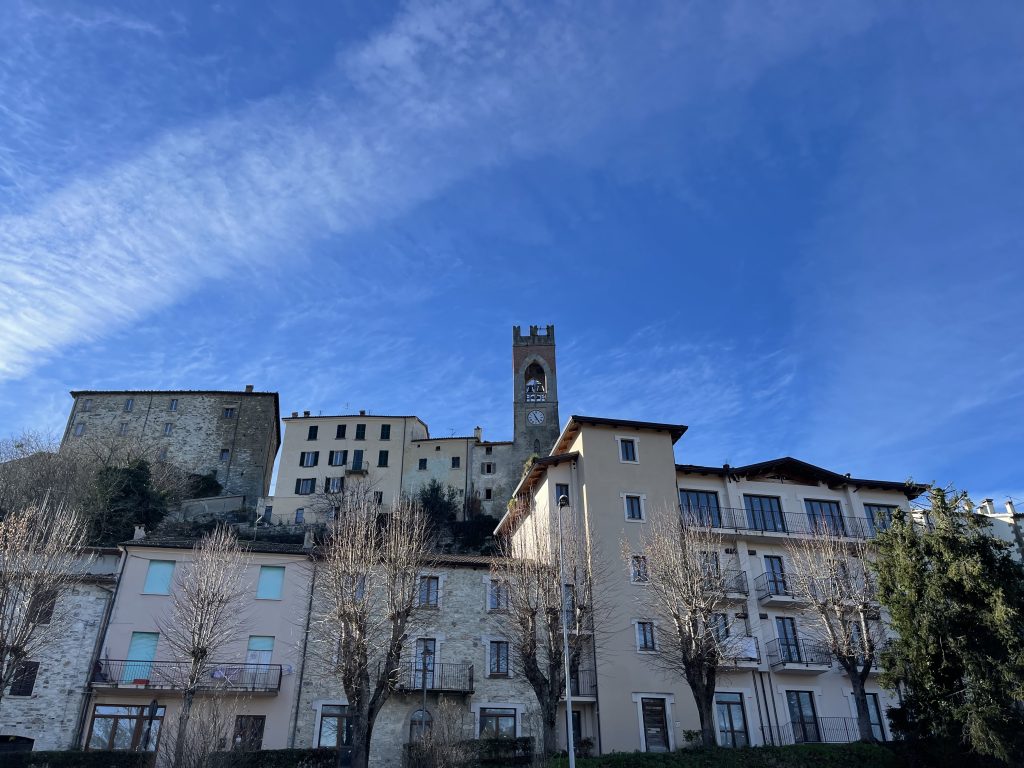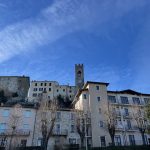Pienza, the ideal city: “born from a thought of love and a dream of beauty”.
Pienza is a charming village located in the heart of the Val d’Orcia, not far from the city of Siena. Perched on the top of a hill, the village enjoys wonderful panoramic views over the Tuscan countryside, a real “timeless landscape”, the protagonist of numerous Renaissance artistic representations.
Pienza
Val D’Orcia offers an evocative example of how the Renaissance landscape was rethought to best represent the principles and effects of the so-called “good governance”. Magnificent depictions of the Tuscan countryside in which people are portrayed in harmony with nature, have become true Renaissance icons influencing the development of landscape philosophy.
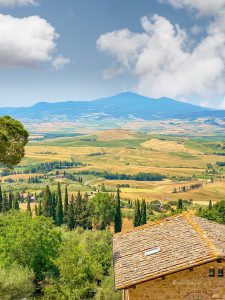 The Renaissance Pienza that we all know was commissioned by Pope Pius II, born Enea Silvio Piccolomini, who, who became Pope in 1458, wants to give a new luster to the native village – originally called Corsignano – entrusting the renovation to the architect Bernardo di Matteo Gambardelli known as Rossellino, a pupil of the famous Leon Battista Alberti, the father of modern perspective. The skilful filling of the spaces in the center of the old medieval village, the geometric perspectives, the volumes of the Cathedral and Palazzo Piccolomini, represent a remarkable testimony of the architectural genius of the time. The co-cathedral of Santa Maria Assunta, the Duomo, offers a delicate balance of Gothic and Renaissance forms and, inside, the Marian theme very dear to the pontiff is represented by the best exponents of the Sienese school of the fifteenth century. Palazzo Piccolomini, also known as “Pontifical”, is believed to be the work of Bernardo Rossellino inspired by the example of Palazzo Rucellai in Florence, designed by master Leon Battista Alberti. With a square plan, in stone worked in ashlar, it stands on three floors. Inside the palace there is a small rectangular courtyard with a loggia and a garden, built according to the dictates of the Renaissance.
The Renaissance Pienza that we all know was commissioned by Pope Pius II, born Enea Silvio Piccolomini, who, who became Pope in 1458, wants to give a new luster to the native village – originally called Corsignano – entrusting the renovation to the architect Bernardo di Matteo Gambardelli known as Rossellino, a pupil of the famous Leon Battista Alberti, the father of modern perspective. The skilful filling of the spaces in the center of the old medieval village, the geometric perspectives, the volumes of the Cathedral and Palazzo Piccolomini, represent a remarkable testimony of the architectural genius of the time. The co-cathedral of Santa Maria Assunta, the Duomo, offers a delicate balance of Gothic and Renaissance forms and, inside, the Marian theme very dear to the pontiff is represented by the best exponents of the Sienese school of the fifteenth century. Palazzo Piccolomini, also known as “Pontifical”, is believed to be the work of Bernardo Rossellino inspired by the example of Palazzo Rucellai in Florence, designed by master Leon Battista Alberti. With a square plan, in stone worked in ashlar, it stands on three floors. Inside the palace there is a small rectangular courtyard with a loggia and a garden, built according to the dictates of the Renaissance.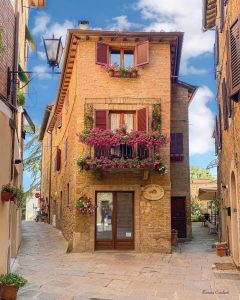 To complete the closure of the central square of Pienza we find Palazzo Borgia so called because it was donated by Pope Pius II to Cardinal Rodrigo Borgia, at the time his close collaborator, who, having become pope with the name of Alexander VI, makes it his residence. Thus was born that is now known as the incarnation of the ideal city: “born from a thought of love and a dream of beauty”, as Giovanni Pascoli wrote. Even today, the ancient Corsignano restores intact the imprint of a Pope, defender of Christianity and devotee of Mary, whose story, narrated in images, is visible in Siena in the Piccolomini Library, inside the Cathedral. Walking through the pretty alleys and streets of Pienza, one has the feeling of being at the center of a harmonious and proportionate whole.
To complete the closure of the central square of Pienza we find Palazzo Borgia so called because it was donated by Pope Pius II to Cardinal Rodrigo Borgia, at the time his close collaborator, who, having become pope with the name of Alexander VI, makes it his residence. Thus was born that is now known as the incarnation of the ideal city: “born from a thought of love and a dream of beauty”, as Giovanni Pascoli wrote. Even today, the ancient Corsignano restores intact the imprint of a Pope, defender of Christianity and devotee of Mary, whose story, narrated in images, is visible in Siena in the Piccolomini Library, inside the Cathedral. Walking through the pretty alleys and streets of Pienza, one has the feeling of being at the center of a harmonious and proportionate whole.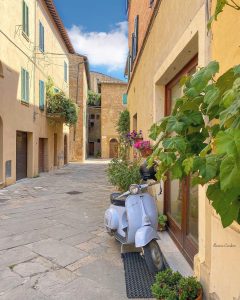 It is no coincidence that the historic center of the city has been included in the UNESCO World Heritage List as a place of high universal value. The village represents the first application of the humanistic-Renaissance conception of urban planning and occupies a decisive position in the development of the conception of the “ideal city” which played a significant role in subsequent urban developments in Italy and beyond.
It is no coincidence that the historic center of the city has been included in the UNESCO World Heritage List as a place of high universal value. The village represents the first application of the humanistic-Renaissance conception of urban planning and occupies a decisive position in the development of the conception of the “ideal city” which played a significant role in subsequent urban developments in Italy and beyond.
